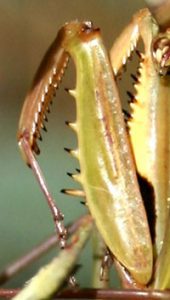
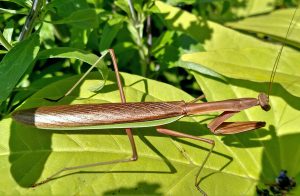
The praying mantids – mantis really refers only to the genus Mantis, while mantid refers to the entire group – are an order of insects (Mantodea) that appear to be “praying” when their front legs are held at rest. These long, narrow insects have a distinctive appearance with the large, characteristic raptorial (folded back like a pocket knife) front legs modified for grasping prey, with long, sharp spines (that fit into grooves on the opposing parts when not in use) for holding what they catch. They also have an elongated thorax that functions like a neck, enabling the triangular head with its large, compound eyes to swivel almost all the way around. Walking sticks might be confused with mantids, as they, too, are long and thin, but they do not have raptorial front legs.

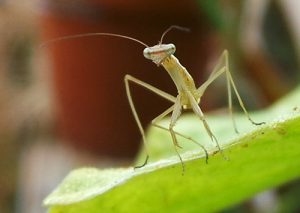
Female mantids generally are larger than the males and have a stouter abdomen. It is commonly believed that the praying mantid female eats the male’s head during the mating process, but this only happens occasionally in the wild unlike in captivity. After mating in the fall, the females lay numerous eggs (dozens to hundreds, depending on the species and conditions) in a frothy secretion attached to a plant stem that hardens into a stryofoam-like egg case (an ootheca). The adults die a few weeks later.
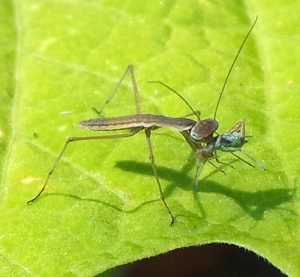
The eggs overwinter within the egg case and hatch in the spring into a very small version of the adult. Although they resemble the adult, the nymphs may be a different color or pattern.

As they go through incomplete metamorphosis over the course of the growing season they grow in size, eventually developing wings as they reach the adult stage in late summer or fall. They tend to be clumsy fliers, and rarely are seen in flight.
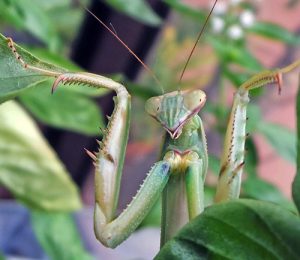
All praying mantids are predaceous, feeding on virtually anything they can catch, such as flies, beetles, crickets, moths, and grasshoppers; larger species of tropical mantids will also eat other animals, such as lizards, frogs, or even hummingbirds.
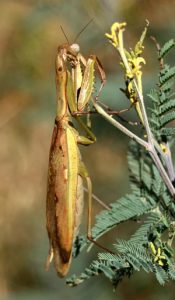

They are ambush predators, sitting and waiting or very slowly stalking with the front legs raised up, poised to clamp down on whatever insect of the appropriate size moves in front of them – including other mantids. The grasping response of the mantid is incredibly fast so targeted prey rarely escapes. They quickly begin to devour the captured animal with their chewing mouthparts. Mantids in turn are eaten by birds, spiders, bats, or fish (if they fall in the water).
Mantids are frequently cryptically colored to match their normal habitat. This camouflage makes them less likely to be noticed by their prey until it’s too late. Some resemble leaves or other plant parts. Many can change their color somewhat to better match their surroundings. When hunting they sometimes sway back and forth to mimic plants moving in a breeze.

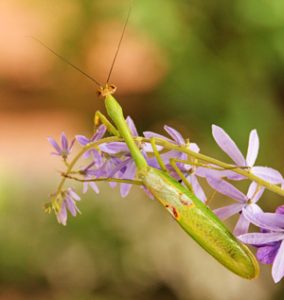
Although they are considered beneficial insects because they eat other insects, they are not particularly useful for biological control because they are indiscriminate feeders and will eat pollinators and other beneficial insects as well as pests, they do not target specific pests, and their cannibalistic nature limits the number of mantids that can exist in an area. But they make great insect ambassadors for introducing children and adult to the world of biology and insects (or just for their entertainment value). Raising mantids in captivity from an egg case is a relatively easy classroom activity, although it probably will not be possible to get the nymphs to mature into adults. Egg cases can be collected in fall (although they blend in very well and are not easy to see) or purchased from a number of suppliers. They can be found in a wide variety of urban, rural, and natural habitats. The insects themselves are generally not easy to spot in the garden either, but sometimes will be found on flowers or attracted to lights at night in late summer. To encourage mantids in the garden, limit pesticide use and provide the dense vegetation they prefer.


Of the 1500 species of mantids worldwide, most are tropical. Only 20 species occur in the U.S. and of those, only three occur in the upper Midwest. The smallest is the native Carolina mantid, Stagmomantus carolina. It is a mottled, dusty brown color, grows only about 2 inches long, and has long antennae. The other two – European mantid (Mantis religiosa) and Chinese Mantid (Tenodera aridifolia; sometimes incorrectly referred to as T. sinensis) – were introduced to North America from other parts of the world in the late 1800’s either accidentally or as garden predators. The European mantid is pale green and about 3 inches long and. The Chinese mantid is 3 to five inches long and bright green, light brown to tan, or a combination of those colors.
– Susan Mahr, University of Wisconsin – Madison
Ask Your Gardening Question
If you’re unable to find the information you need, please submit your gardening question here:





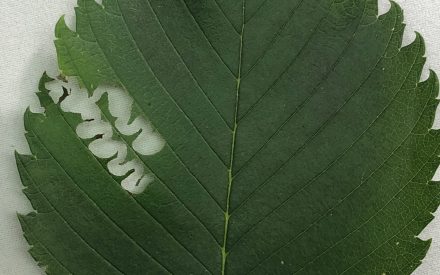 Elm Zigzag Sawfly
Elm Zigzag Sawfly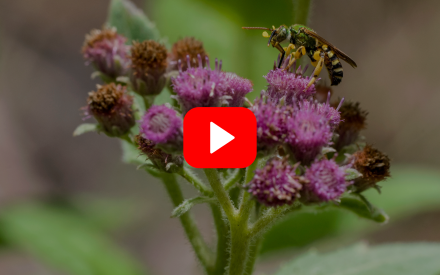 ▶ Watch: Pollinator Gardens: Plant Selection and Garden Care
▶ Watch: Pollinator Gardens: Plant Selection and Garden Care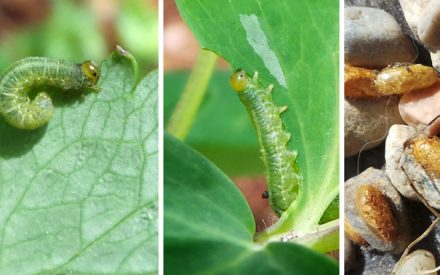 Strategies for Identifying and Managing Insect Pests
Strategies for Identifying and Managing Insect Pests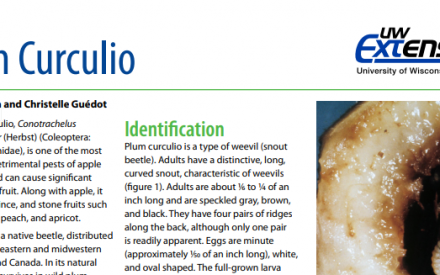 Plum Curculio
Plum Curculio


